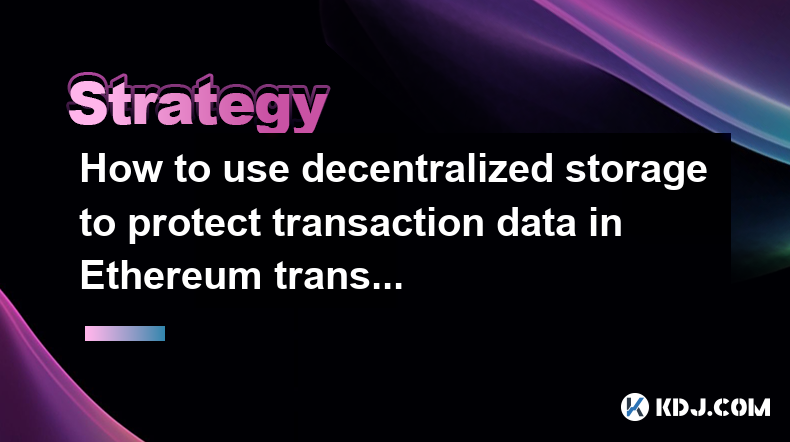-
 Bitcoin
Bitcoin $87,978.1600
-8.07% -
 Ethereum
Ethereum $2,395.1535
-10.71% -
 Tether USDt
Tether USDt $0.9997
-0.06% -
 XRP
XRP $2.1273
-13.64% -
 BNB
BNB $605.8408
-5.16% -
 Solana
Solana $136.4490
-13.19% -
 USDC
USDC $1.0001
0.01% -
 Dogecoin
Dogecoin $0.2023
-11.99% -
 Cardano
Cardano $0.6455
-11.92% -
 TRON
TRON $0.2289
-6.85% -
 Chainlink
Chainlink $14.6479
-12.09% -
 Avalanche
Avalanche $20.9684
-11.56% -
 Stellar
Stellar $0.2786
-12.25% -
 Litecoin
Litecoin $112.3455
-8.89% -
 Toncoin
Toncoin $3.3885
-7.78% -
 Sui
Sui $2.7119
-15.69% -
 UNUS SED LEO
UNUS SED LEO $8.9170
-8.10% -
 Shiba Inu
Shiba Inu $0.0...01354
-8.02% -
 MANTRA
MANTRA $7.8333
-6.65% -
 Hedera
Hedera $0.1801
-10.68% -
 Polkadot
Polkadot $4.2992
-8.68% -
 Ethena USDe
Ethena USDe $0.9998
-0.03% -
 Hyperliquid
Hyperliquid $17.6026
-17.63% -
 Bitcoin Cash
Bitcoin Cash $281.5953
-9.80% -
 Dai
Dai $0.9998
-0.03% -
 Bitget Token
Bitget Token $4.2696
-12.75% -
 Uniswap
Uniswap $7.7554
-8.97% -
 Monero
Monero $218.5749
-6.23% -
 NEAR Protocol
NEAR Protocol $2.8866
-12.80% -
 Pepe
Pepe $0.0...07660
-13.51%
How do people in the currency circle make money?
Leveraging trading amplifies both potential gains and risks, requiring traders to carefully manage leverage ratios and risk parameters.
Jan 09, 2025 at 03:35 am

Key Points
- Leveraged Trading: Amplifying gains through borrowing of funds to increase position size
- Spot Trading: Buying and selling crypto assets at the current market price
- Derivatives Trading: Utilizing futures, options, and perpetuals for speculating on price movements
- Staking: Earning passive rewards by holding and validating certain cryptocurrencies
- Yield Farming: Deploying cryptocurrency assets to earn interest in decentralized finance (DeFi) protocols
- Liquidity Providing: Contributing assets to liquidity pools to facilitate trading and earn fees
- Play-to-Earn (P2E) Games: Monetizing gaming activities through in-game rewards and non-fungible tokens (NFTs)
- NFT Trading: Buying, selling, and minting digital assets with unique characteristics and value
- Node Operation: Validating transactions and securing blockchain networks, earning rewards in cryptocurrencies
- Content Creation and Education: Sharing insights, tutorials, and other educational materials related to cryptocurrency
- Referral Programs: Receiving commissions for referring new users to exchanges or platforms
- Crypto-Focused Businesses: Starting businesses that provide services or products within the cryptocurrency ecosystem
Detailed Explanation
Leveraged Trading:
Leveraged trading involves borrowing funds to increase the size of one's position, amplifying both potential profit and risk. Traders must carefully manage leverage ratios and risk parameters, as losses can exceed the initial investment.
Spot Trading:
Spot trading is the basic method of buying and selling crypto assets at the current market price. Traders profit from price fluctuations by buying low and selling high. It is generally considered less risky than leveraged trading.
Derivatives Trading:
Derivatives are financial instruments that derive their value from the underlying asset, such as a cryptocurrency. Futures, options, and perpetuals allow traders to speculate on price movements without the need to hold the physical asset.
Staking:
Staking involves locking up a certain amount of cryptocurrency in a wallet or a specific pool to support the blockchain network. In return, stakers earn passive rewards in the form of additional cryptocurrency.
Yield Farming:
Yield farming involves deploying cryptocurrency assets into DeFi protocols to earn interest rates, typically in the form of the native token of the protocol. Different protocols offer varying yield rates based on the risk profile.
Liquidity Providing:
Liquidity providers contribute cryptocurrency assets to liquidity pools on decentralized exchanges. These pools are used for facilitating trades, and providers earn fees based on the volume of trades that utilize their liquidity.
Play-to-Earn (P2E) Games:
P2E games allow players to monetize their gaming activities by earning in-game rewards, often in the form of cryptocurrencies or NFTs. Players can engage in various challenges, quests, or battles to accumulate rewards.
NFT Trading:
NFTs are digital assets with unique characteristics and value that are recorded on a blockchain. NFT trading involves buying, selling, and minting NFTs, and traders can profit from the appreciation in value, as well as from royalty payments generated from secondary sales.
Node Operation:
Node operation involves validating transactions, maintaining the integrity of the blockchain, and contributing to the network's security. Validators receive rewards in cryptocurrencies for their efforts.
Content Creation and Education:
Individuals with expertise in cryptocurrency can create and share educational materials, such as tutorials, articles, or videos. Platforms like YouTube, Medium, and Twitter provide opportunities for crypto enthusiasts to share insights and earn revenue from content views or affiliate partnerships.
Referral Programs:
Many exchanges and platforms offer referral programs that provide commissions for referring new users to their services. This is a relatively passive way of generating income from cryptocurrency-related activities.
Crypto-Focused Businesses:
Starting a business that provides services or products within the cryptocurrency ecosystem can also be a way to make money. Examples include cryptocurrency exchanges, custody services, blockchain analytics tools, and hardware wallet manufacturers.
FAQs
Q: What is the most profitable way to make money in crypto?
A: The most profitable method depends on individual risk tolerance and market conditions. Leveraged trading can yield high returns, but it also carries significant risk. Staking and yield farming offer more stable but generally lower returns.
Q: How much money can you make in crypto?
A: The potential earnings from cryptocurrency-related activities vary widely based on skill, market conditions, and the amount of capital invested. Some individuals make a modest income, while others have achieved substantial wealth.
Q: Is it too late to make money in crypto?
A: The cryptocurrency industry is constantly evolving, with various opportunities emerging for individuals to make money. It is not necessarily too late to enter the market, but it is crucial to stay informed and manage risk effectively.
Q: What is the safest way to make money in crypto?
A: Spot trading, staking, and yield farming are generally considered less risky methods of making money in crypto. However, it is important to thoroughly research and only invest what you are prepared to lose.
Q: What are some tips for making money in crypto?
A: Educate yourself about the cryptocurrency market, research different strategies, manage risk, and diversify your investments across multiple assets and strategies.
Disclaimer:info@kdj.com
The information provided is not trading advice. kdj.com does not assume any responsibility for any investments made based on the information provided in this article. Cryptocurrencies are highly volatile and it is highly recommended that you invest with caution after thorough research!
If you believe that the content used on this website infringes your copyright, please contact us immediately (info@kdj.com) and we will delete it promptly.
- Wall Street Bitcoin Miner Riot Platforms Posts Record Revenue
- 2025-02-25 19:15:29
- Bitcoin (BTC) Dips Below $89K as Nasdaq Futures Point to Continued Losses in Technology Stocks
- 2025-02-25 19:10:29
- Dogecoin Teeters on the Brink of Another Potential Surge, Observers Watch for Signs Reminiscent of Its Explosive Growth in Early 2021
- 2025-02-25 19:10:29
- Former FTX CEO Sam Bankman-Fried Breaks the Internet with Shocking Tweets from Prison!
- 2025-02-25 19:10:29
- Dogecoin (DOGE) Holders Shift Focus to New Altcoin (WLTQ) as DOGE Faces Selling Pressure
- 2025-02-25 19:10:29
- FXGuys: Redefining Crypto Trading with No KYC Hassles
- 2025-02-25 19:10:29
Related knowledge

How to buy and sell cryptocurrencies through P2P platforms?
Feb 25,2025 at 05:27pm
1. Choose the right P2P platform Security: Check whether the platform has complete security measures, such as multiple encryption, cold wallet storage, etc., to ensure the security of funds and personal information.Transaction fees: Understand the proportion of handling fees charged by the platform. The fees charged by different platforms are different,...

What are the fees for buying and selling cryptocurrencies?
Feb 25,2025 at 05:18pm
Transaction feePlatform charging method: Most cryptocurrency trading platforms charge handling fees at a certain proportion of the transaction amount. For example, some platforms charge 0.1% to 0.5% per transaction. If you trade cryptocurrency of 10,000 yuan, you will be charged at 0.2%, and the handling fee will be 20 yuan.Influencing factors: transact...

When is the best time to buy and sell cryptocurrencies?
Feb 25,2025 at 04:50pm
Analyze market trendsMarket trends are the key to judging the timing of buying and selling. In an upward trend, prices continue to hit highs and lows gradually rise. You can buy when you pull back to support; on the contrary, the price continues to fall, the highs gradually decrease, and you can sell when you rebound to resistance. We must continue to p...

How to deal with the uncertainty caused by network forks in Ethereum transactions?
Feb 25,2025 at 07:30pm
Key PointsUnderstanding Network ForksPreparing for Potential ForksMitigating Risks During ForksPost-Fork ActionsFAQsUnderstanding Network ForksNetwork forks occur when a blockchain undergoes a software upgrade, leading to a split into two distinct chains:Hard fork: Incompatible with the previous version, requiring all nodes to upgrade to continue valida...

How to use decentralized storage to protect transaction data in Ethereum transactions?
Feb 25,2025 at 07:48pm
Key Points of the Article:Transaction Data in Ethereum Transactions and its ImportanceAdvantages of Decentralized Storage over Centralized Storage for Transaction DataStep-by-Step Guide to Using Decentralized Storage for Transaction DataBenefits of Using Decentralized Storage for Transaction Data ProtectionBest Decentralized Storage Options for Ethereum...

How to utilize long-short hedging strategies in Ethereum trading?
Feb 25,2025 at 09:07am
Key Points:Understand the concept of long-short hedgingChoose appropriate assets for long and short positionsManage risk and leverageMonitor positions and adjust as neededExplore advanced strategiesHow to Utilize Long-Short Hedging Strategies in Ethereum Trading:1. Comprehend Long-Short HedgingLong-short hedging involves simultaneously holding opposite ...

How to buy and sell cryptocurrencies through P2P platforms?
Feb 25,2025 at 05:27pm
1. Choose the right P2P platform Security: Check whether the platform has complete security measures, such as multiple encryption, cold wallet storage, etc., to ensure the security of funds and personal information.Transaction fees: Understand the proportion of handling fees charged by the platform. The fees charged by different platforms are different,...

What are the fees for buying and selling cryptocurrencies?
Feb 25,2025 at 05:18pm
Transaction feePlatform charging method: Most cryptocurrency trading platforms charge handling fees at a certain proportion of the transaction amount. For example, some platforms charge 0.1% to 0.5% per transaction. If you trade cryptocurrency of 10,000 yuan, you will be charged at 0.2%, and the handling fee will be 20 yuan.Influencing factors: transact...

When is the best time to buy and sell cryptocurrencies?
Feb 25,2025 at 04:50pm
Analyze market trendsMarket trends are the key to judging the timing of buying and selling. In an upward trend, prices continue to hit highs and lows gradually rise. You can buy when you pull back to support; on the contrary, the price continues to fall, the highs gradually decrease, and you can sell when you rebound to resistance. We must continue to p...

How to deal with the uncertainty caused by network forks in Ethereum transactions?
Feb 25,2025 at 07:30pm
Key PointsUnderstanding Network ForksPreparing for Potential ForksMitigating Risks During ForksPost-Fork ActionsFAQsUnderstanding Network ForksNetwork forks occur when a blockchain undergoes a software upgrade, leading to a split into two distinct chains:Hard fork: Incompatible with the previous version, requiring all nodes to upgrade to continue valida...

How to use decentralized storage to protect transaction data in Ethereum transactions?
Feb 25,2025 at 07:48pm
Key Points of the Article:Transaction Data in Ethereum Transactions and its ImportanceAdvantages of Decentralized Storage over Centralized Storage for Transaction DataStep-by-Step Guide to Using Decentralized Storage for Transaction DataBenefits of Using Decentralized Storage for Transaction Data ProtectionBest Decentralized Storage Options for Ethereum...

How to utilize long-short hedging strategies in Ethereum trading?
Feb 25,2025 at 09:07am
Key Points:Understand the concept of long-short hedgingChoose appropriate assets for long and short positionsManage risk and leverageMonitor positions and adjust as neededExplore advanced strategiesHow to Utilize Long-Short Hedging Strategies in Ethereum Trading:1. Comprehend Long-Short HedgingLong-short hedging involves simultaneously holding opposite ...
See all articles

















































































